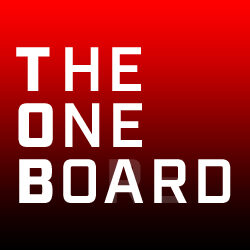This installment of The One Board originally appeared in Bowlers Journal International, February, 2020
There are a lot of things worth boasting about in the sport of bowling: a deft adjustment, the perfect combination of speed and angles, an unflappable performance under pressure, the fact that if you’d only not whiffed 43 single pins and left 13 ringing 10s in a row, you definitely would’ve made the cut.
Some things, though, aren’t worthy of bragging. At the top of that list: getting the score right.
Because bowling scoring is so fluid, it takes a lot of brainpower to be able to determine what the cut score is going to be, especially during position round with multiple players and 30 bonus pins per match involved. Thus, it seems like it might be a prideful moment to know the score. If so, that pride should remain internal. “I got the score right” should never be uttered.
Of course we should get the score right. It’s a sport. Sports have scores. Just because bowling’s scoring system isn’t inherently understood by laymen doesn’t mean we need to point that out to everyone.
As the players get into the seventh frame of the final game of match play, murmuring throughout the bowling center is full of more conditions than a U.S. Open oil-pattern schedule. “If he strikes here, but that guy spares, then the other guy doubles while the fourth guy fouls, then all the fifth guy needs to do is strike out and he makes it, which will also put the third guy into the special-event points cut but still not inside the special-event money cut, which would go to the sixth guy… if he doesn’t split and the seventh guy loses to the eighth guy.”
Anyone who can do all that math at that precise moment is impressive, but it’s all moot when the first guy opens, at which point a whole new set of conditions enter the conversation.
Is there any other sport in which knowing the score is something to brag about? Perhaps sports like figure skating or gymnastics might qualify, but anything with a judged score is subjective. Unless you’re an actual judge, you’re merely guessing at what the scores might be.
Bowling is objective so there should be no guessing involved: a strike is 10 plus the next two shots, a spare is 10 plus the next shot and an open frame is the actual value of the pinfall in that frame, all added together over the course of 10 frames, including one or two fill balls if necessary, plus 30 bonus pins if we’re playing that way, then contrasted against the rest of the field who are all bowling simultaneously before being manually recorded and cross-checked against the computer. Could anything be simpler?
It is important to know the score. The players need to know what it will take to make the cut and the fans need to know which shots are important during those exciting final moments.
But when we brag about knowing the score, all we’re doing is calling attention to the fact that most human beings have no idea what’s going on until someone announces the top five.
Because of the indecipherable pandemonium, the chaos of position round is uniquely wonderful to bowling. Nobody at a basketball game is saying, “The Pistons are down by two points, but if they make a three-pointer here, they’ll be ahead by one.” Everybody already knows that. Then, when the game ends, fans are either happy their team won or unhappy their team lost, but no one is crowing about having known the score.
In bowling, although most can determine the score of each player’s game, making sense of the cut-line bedlam is accessible only to an elite few. Those few have reputations and commensurate audiences waiting to hear who made the cut. It’s an impressive ability, but it’s not for bragging. It’s a sport; everyone should know the score.

